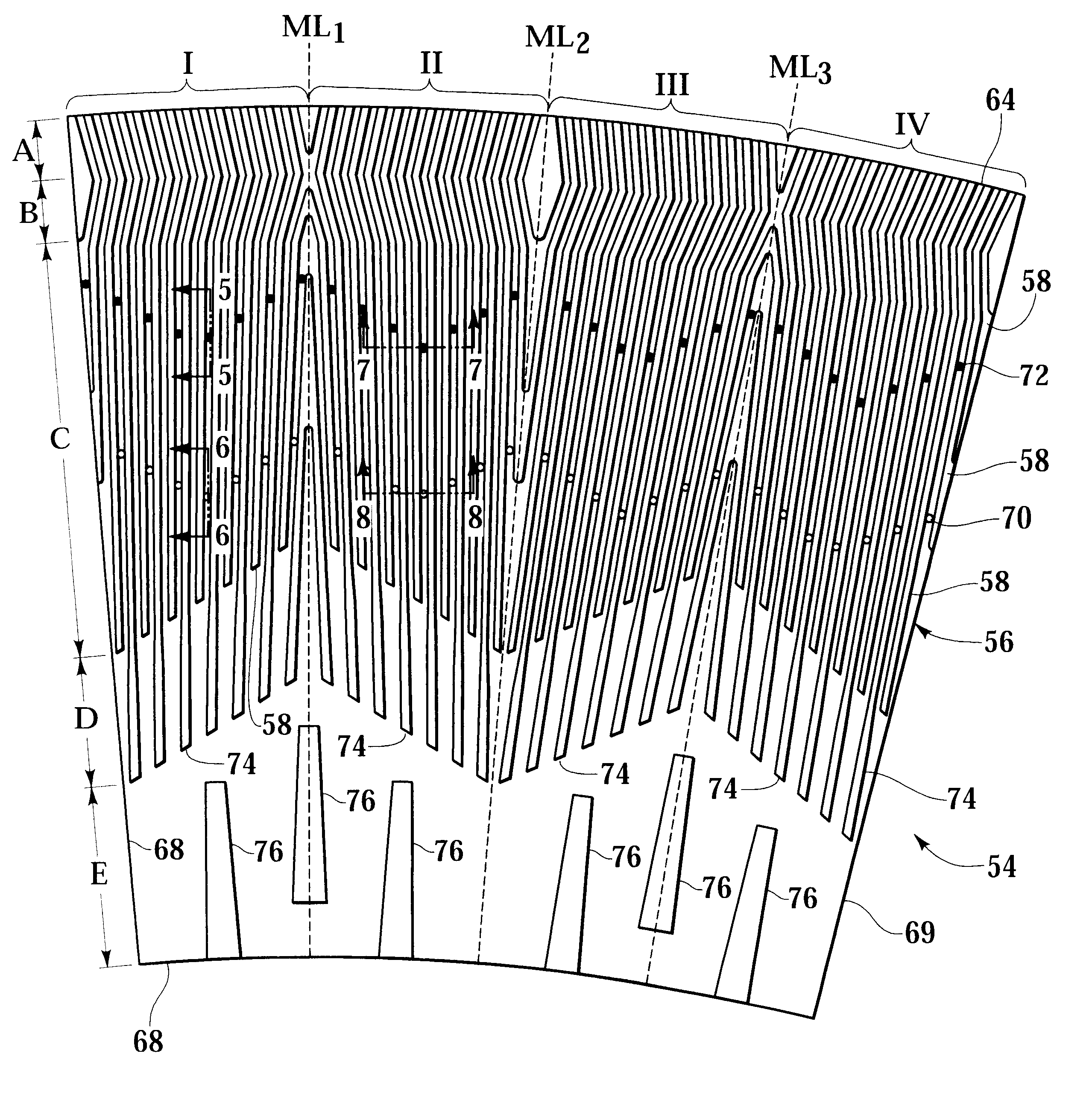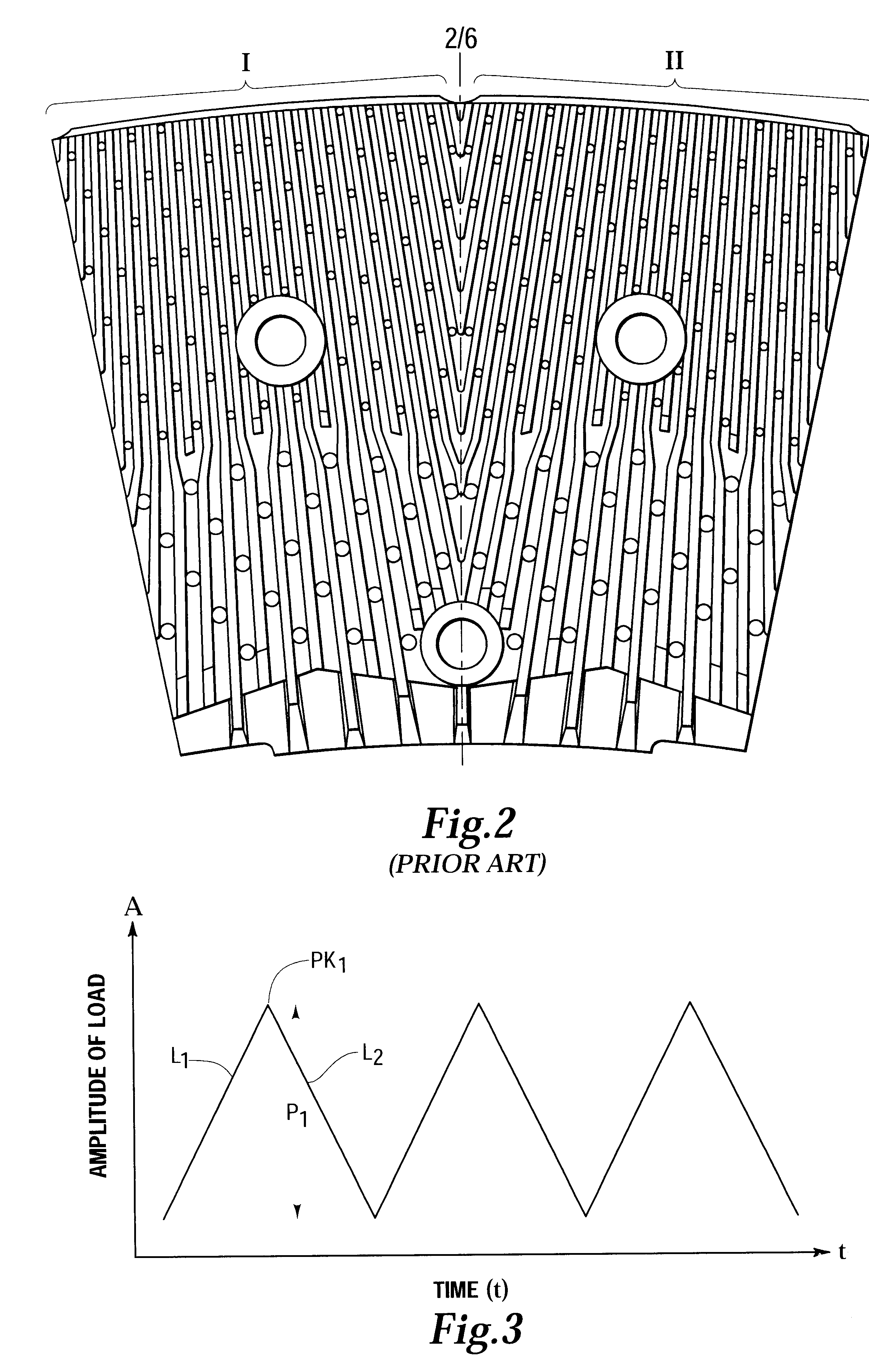Refiner disc and method
a refiner disc and disc body technology, applied in the field of refiner discs, can solve the problems of unidirectional edge wear of commercial refiner discs, affecting reducing pulp quality and efficiency, so as to reduce refiner wear and refiner disc wear, reduce the magnitude or amplitude of refiner loads, and increase the load and throughput
- Summary
- Abstract
- Description
- Claims
- Application Information
AI Technical Summary
Benefits of technology
Problems solved by technology
Method used
Image
Examples
Embodiment Construction
An exemplary refiner 20 is shown FIG. 1. The refiner 20 has a housing 22 and an auger 24 mounted therein which urges a stock slurry of liquid and fiber introduced through a stock inlet 26 into the refiner 20. The auger 24 is carried by a shaft 28 that rotates during refiner operation to help supply stock to an arrangement of treating structure within the housing 22 and a rotating rotor 30. An annular flinger nut 32 is generally in line with the auger 24 and directs the stock radially outwardly to a plurality of opposed sets of breaker bar segments 34 and 36.
Each set of breaker bar segments 34 and 36 preferably are in the form of sectors of an annulus, which together form an encircling section of breaker bars. One set of breaker bar segments 34 is fixed to the rotor 30. The other set of breaker bar segments 36 is fixed to another portion of the refiner, such as a stationary mounting surface 38 of the housing 22 or another rotor (not shown).
The breaker bar segments 34 and 36 discharge...
PUM
| Property | Measurement | Unit |
|---|---|---|
| angle | aaaaa | aaaaa |
| angle | aaaaa | aaaaa |
| angle | aaaaa | aaaaa |
Abstract
Description
Claims
Application Information
 Login to View More
Login to View More - R&D
- Intellectual Property
- Life Sciences
- Materials
- Tech Scout
- Unparalleled Data Quality
- Higher Quality Content
- 60% Fewer Hallucinations
Browse by: Latest US Patents, China's latest patents, Technical Efficacy Thesaurus, Application Domain, Technology Topic, Popular Technical Reports.
© 2025 PatSnap. All rights reserved.Legal|Privacy policy|Modern Slavery Act Transparency Statement|Sitemap|About US| Contact US: help@patsnap.com



